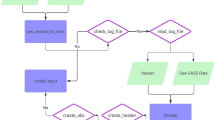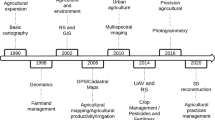Abstract
The geodetic datum transformation in-between local and global systems seen in the world are inspiring for the engineering applications. In this context, the Egyptian geodetic network has a limited observation for the terrestrial and satellite of the geodetic networks. Transforming the coordinates of the Egyptian datum, here we demonstrate the datum transformation in three directions from global to local coordinates that utilized the artificial neural network (ANN) technique as a new tool of datum transformation in Egypt. A conventional, which are the Helmert and Molodensky, and numerical, which are the regression, minimum curvature surface, and ANN, datum transformation techniques are investigated and compared over the available data in Egypt. The results showed an accurate transforming datum using ANN technique for both common and check points, and the novel model improved the transformation coordinates by 37 to 72% in space directions. A comparison between the conventional and numerical techniques shows that the accuracy of the developed ANN model is 20.16 cm in terms of standard deviation based on the residuals of the projected coordinates.






Similar content being viewed by others
References
Abd-Elmotaal H (1994) Comparison of polynomial and similarity transformation based datum-shifts for Egypt. Bull Geod 68(3):168–172
Abou-Beih OM, Al-Garni AM (1996) Precise geodetic positioning based on the concept of variable datum transformation parameters. Australian Surveyor 41(3):214–220
Akyilmaz MO et al (2009) Soft computing methods for geoidal height transformation. Earth Planets Space 61(7):825–833
Ardalan AA, Grafarend EW, Ihde J (2002) Molodensky potential telluroid based on a minimum-distance map. Case study: the quasi-geoid of east Germany in the World Geodetic Datum 2000. J Geod 76(3):127–138
Civicioglu P (2012) Transforming geocentric cartesian coordinates to geodetic coordinates by using differential search algorithm. Comput Geosci 46:229–247
Dawod GM (2009) Geoid modelling in Egypt. google. Available at: https://sites.google.com/site/gomaadawod/geoidofegypt
Dawod GM, Abdel-Aziz TM (2003) Establishement of a precise geodetic control network for updating the river nile maps. In: Proceedings of Al-Azhar Engineering 7th International Conference, Cairo. pp 1–11
Dawod GM, Dalal SA (2000) Optimum geodetic datum transformation techniques for GPS surveys in Egypt. In: Conference: Al-Azhar Engineering Sixth International Conference, Cairo. pp 709–718
Dawod GM, Mohamed HF, Ismail SS (2010) Evaluation and adaptation of the EGM2008 geopotential model along the Northern Nile Valley, Egypt: case study. J Surv Eng 136(1):36–40
Deakin R (2006) A note on the Bursa-Wolf and Molodensky-Badekas transformations, School of Mathematical & Geospatial Sciences, RMIT University, Australia
Elmaghraby M, Fayad A, El-habiby M (2005) Investigating the effect of neglecting parts of the EGD geodetic height on the transformation from Helmert 1906 to WGS84. In: FIG Working Week 2005 and GSDI-8, Cairo. p TS13
El-Shambaky HT (2004) Development and improvement the transformation parameters for egyptian. PhD thesis, public works engineering department, Mansoursa university, Egypt
El-Tokhey ME et al (2015) Investigating the geometrical problems related to the redifinition of the Egyptian geodetic datum. Int J Eng ResTechnol (IJERT) 4(8):113–121
Erol B, Erol S (2012) GNSS in practical determination of Regional Heights. In: Jin S (ed) Global navigation satellite systems: signal, theory and applications. InTech, Shanghai, China. pp 127–160
Erol B, Erol S (2013) Learning-based computing techniques in geoid modeling for precise height transformation. Comput Geosci 52:95–107
Fang X (2014) A total least squares solution for geodetic datum transformations. Acta Geodaet Geophys 49(2):189–207
Fazilova D (2017) The review and development of a modern GNSS network and datum in Uzbekistan. Geodesy and Geodynamics 8(3):187–192
Hagan MT, Demuth HB, Beale MH (1995) Neural network design, vol 2. PWS, Boston Massachusetts, p 734
Haykin S (1994) Neural networks-A comprehensive foundation, 1st edn. Prentice Hall PTR, Upper Saddle River
Haykin S (2001) Neural network: a comprehensive foundation, 2nd edn, Hamilton Ontario
Herrault PA et al (2013) A comparative study of geometric transformation models for the historical “Map of France” registration. Geographia Technica 1:34–46
Hornik KM, Stinchombe M, White H (1989) Multilayer feedforward networks are universal approximators. Neural Netw 2(5):359–366
Jones GC (2002) New solutions for the geodetic coordinate transformation. J Geod 76(8):437–446
Khazraei SM et al (2017) Combination of GPS and leveling observations and geoid models using least-squares variance component estimation. J Surv Eng 143(2):04016023,1–0401602311
Kinneen RW, Featherstone WE (2004) An empirical comparison of coordinate transformations from the Australian Geodetic Datum (AGD66 and AGD84) to the Geocentric Datum of Australia (GDA94). J Spat Sci 49(2):1–29
Konakoglu B, Cakır L, Gökalp E (2016) 2D coordinate transformation using artificial neural networks. ISPRS - International Archives of the Photogrammetry, Remote Sensing and Spatial Information Sciences, XLII-2/W1(October), pp 183–186
Kwon JH, Bae TS, Choi YS, Lee DC, Lee YW (2005) Geodetic datum transformation to the global geocentric datum for seas and islands around Korea. Geosci J 9(4):353–361
Liao DC, Wang QJ, Zhou YH, Liao XH, Huang CL (2012) Long-term prediction of the earth orientation parameters by the artificial neural network technique. J Geodyn 62(May):87–92
Lwangasi AS (1993) Datum transformation parameters for the Kenya geodetic system. Surv Rev 32(247):39–46
Mataija M, Pogarčic M, Pogarčic I (2014) Helmert transformation of reference coordinating systems for geodesic purposes in local frames. Procedia Eng 69:168–176
MathWorks Inc (2015) Signal processing toolbox™ User’s guide R2015b. MathWorks Inc, p.Overview
Mikhail EM (1976) Observations and least squares. Dun Donnelly, New York
Mina E (2006) A unified system of transformation parameters for combining different geodetic networks in Egypt. In: ASPRS 2006 Annual Conference Reno, Nevada
Rabah M, Shaker A, Farhan M (2015) Towards a semi-kinematic datum for Egypt. Positioning 6:49–60
Rabah M, Elmewafey M, Farahan MH (2016) Datum maintenance of the main Egyptian geodetic control networks by utilizing precise point positioning “PPP” technique. NRIAG J Astron Geophys 5(1):96–105
Richard K (2009) Geometric aspects of mapping. International Institute for Geo-Information Science and Earth Observation (ITC), Enschede. Available at: https://kartoweb.itc.nl/geometrics/
Saad AA, Elsayed MS (2007) Simple model for improving the accuracy of the egyptian geodetic triangulation network. In: FIG Working Week 2007 Hong Kong. pp 1–24
Shaker AA et al (2007) Remove-restore technique for improving the datum transformation process. In: FIG Working Week 2007 Hong Kong. pp 13–17
Shen YZ, Chen Y, Zheng DH (2006) A quaternion-based geodetic datum transformation algorithm. J Geod 80(5):233–239
Srivastava N et al (2014) Dropout: a simple way to prevent neural networks from overfitting. J Mach Learn Res 15:1929–1958
Tierra A, Romero R (2014) Planes coordinates transformation between PSAD56 to SIRGAS using a multilayer artificial neural network. Geodesy Cartography 63(2):199–209
Tierra A, Dalazoana R, De Freitas S (2008) Using an artificial neural network to improve the transformation of coordinates between classical geodetic reference frames. Comput Geosci 34(3):181–189
Vandenberg DJ (1999) Combining GPS and terrestrial observations to determine deflection of the vertical. Master thesis, Faculty of Engineering, Purdue University, USA
Yang Y (1999) Robust estimation of geodetic datum transformation. J Geod 73(5):268–274
Zaki AM (2015) Assessment of GOCE models in Egypt. Master thesis, Cairo University
Závoti J, Kalmár J (2016) A comparison of different solutions of the Bursa–Wolf model and of the 3D, 7-parameter datum transformation. Acta Geodaetica et Geophysica 51(2):245–256
Ziggah YY et al (2013) Determination of GPS coordinate transformation parameters of geodetic data between reference datums—a case study of Ghana geodetic reference network. Int J Eng Sci Res Technol 2(4):956–971
Ziggah YY, Youjian H, Yu X, Basommi LP (2016) Capability of artificial neural network for forward conversion of geodetic coordinates ( ϕ, λ, h ) to Cartesian coordinates (X, Y, Z). Math Geosci 48(6):687–721
Acknowledgments
This research was supported by Basic Science Research Program through the National Research Foundation of Korea (NRF) funded by the Ministry of Science, ICT & Future Planning (2017R1A2B2010120).
Author information
Authors and Affiliations
Corresponding author
Ethics declarations
Conflict of interest
The authors declare that they have no conflict of interest.
Rights and permissions
About this article
Cite this article
Elshambaky, H.T., Kaloop, M.R. & Hu, J.W. A novel three-direction datum transformation of geodetic coordinates for Egypt using artificial neural network approach. Arab J Geosci 11, 110 (2018). https://doi.org/10.1007/s12517-018-3441-6
Received:
Accepted:
Published:
DOI: https://doi.org/10.1007/s12517-018-3441-6




